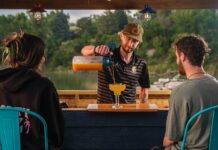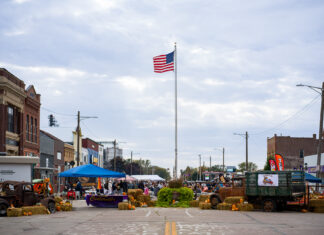Images by Jeff Sampson Photography
In the years long prior to what most might imagine, one author began to observe the erosion of the traditional values in society under the influence of wealth. She wrote of the modernization and changing nature of a culture that led a farmer who had a developed a deep relationship with the earth based on the productions of his own labor, into the lifestyle of a family estranged from the earth, gaining their wealth from the harvests of hired help.However, Pearl S. Buck, author of “The Good Earth,” could not have imagined that her award winning novel published in 1931 would be the inspiration of a local natural farm, so much so that upon arriving, visitors are greeted by none other than the farmer’s dog, “Buck.”
What was began as a yearlong sailing adventure for Jeff and Nancy Kirstein has evolved into a lifestyle benefiting the lives of many within Sioux Falls and its surrounding areas. In a search for the peacefulness and sense of community experienced within their time spent abroad, the ability to purchase fresh produce daily, and the newfound perspective that they both had gained from reading Buck’s bestselling novel, the couple relocated from their previous residence in Sioux Falls to a vegetable farm located just south of Lennox, South Dakota. The Good Earth currently serves as a natural farm consisting of 26 acres of pastures, creek and farmland.
“We thought for a long time about what we could do, because we wanted something without negatives associated with it,” said Jeff. “We choose this business because it doesn’t hurt anyone. We sell good food to good people. It’s an honest way of living.”
The Good Earth serves as a Community Supported Agriculture (CSA) farm, an upcoming trend for consumers to buy local, seasonal food directly from a farmer. As the farmers, the Kirstein’s offer a certain number of "shares" to the public, which in turn allows interested consumers to purchase a share, much like a membership, and in return receive a division of seasonal produce each week throughout the farming season.
“We are selling our produce through a CSA because it will create that community that we are looking for. The consumer will have the benefit of knowing where their food is grown and the people who grow it,” said Nancy Kirstein. “We get to work trying to maximize their return by growing as much healthy, delicious food as we can.”
As shareholders, the customers share in the risk and the reward of the harvest from the farm, entertaining the possibility of a faulty lettuce crop or 50 pounds a week of tomatoes—a new definition of gamble. And while everyone shares in the hopes of a long summer season (15 weeks to be specific), extraneous heat waves or an unexpected hail or frost can leave the benefits of the pre-paid engagement and the work of the farmers at a greater loss than most. However, as the Kirsteins and their sharecroppers see it, the risk-reward relationship is often overlooked alongside the personal relationships that develop at The Good Earth.
To read the entire article, pick up the new issue of 605 Magazine today!


















